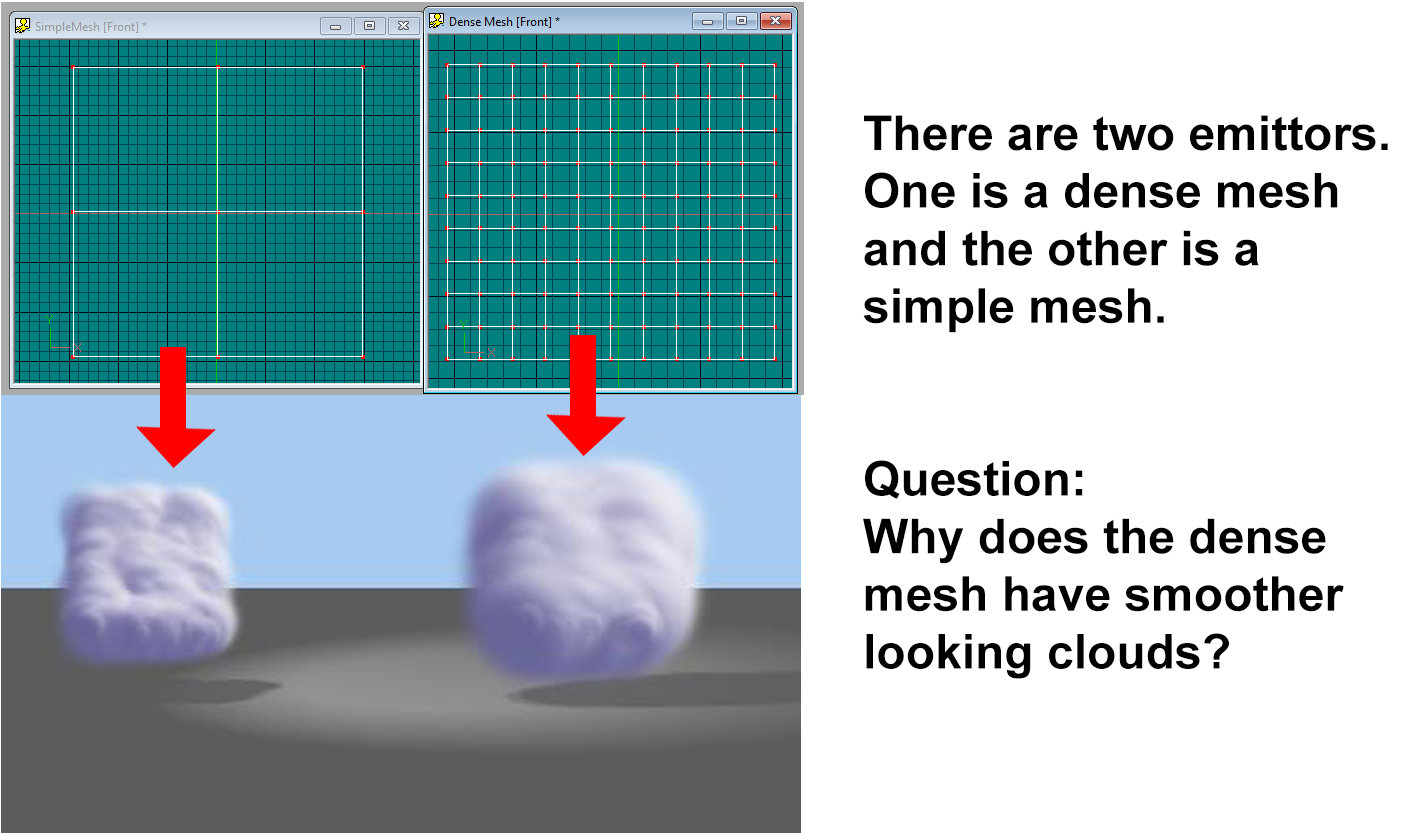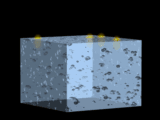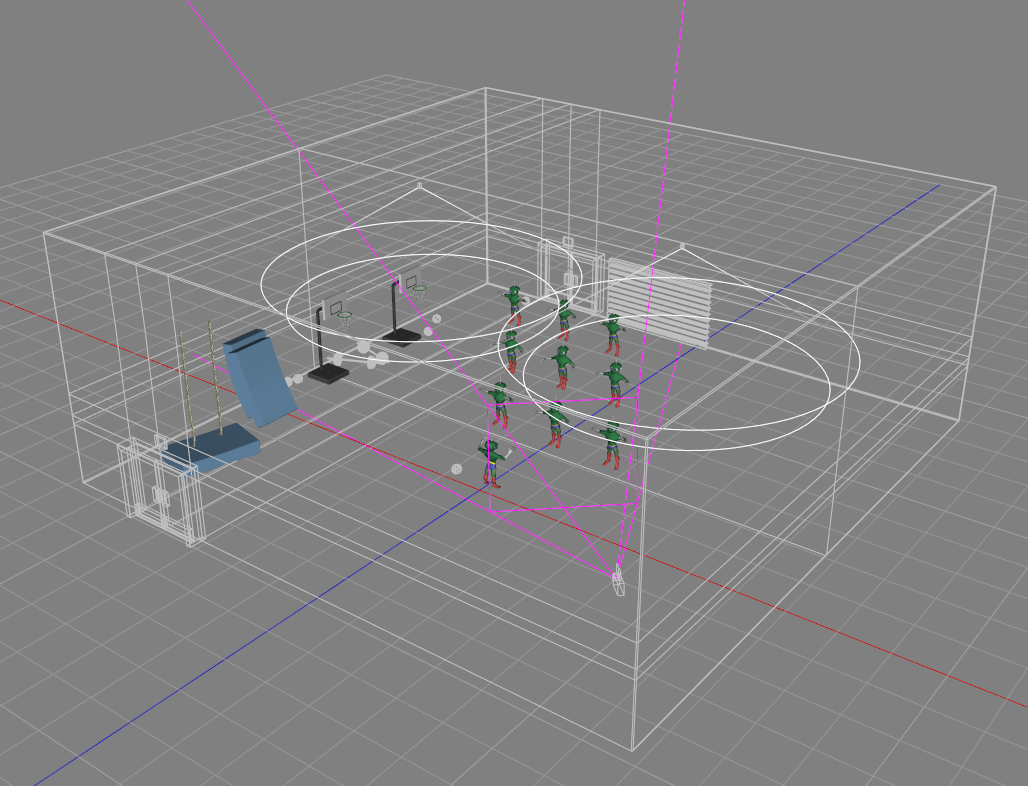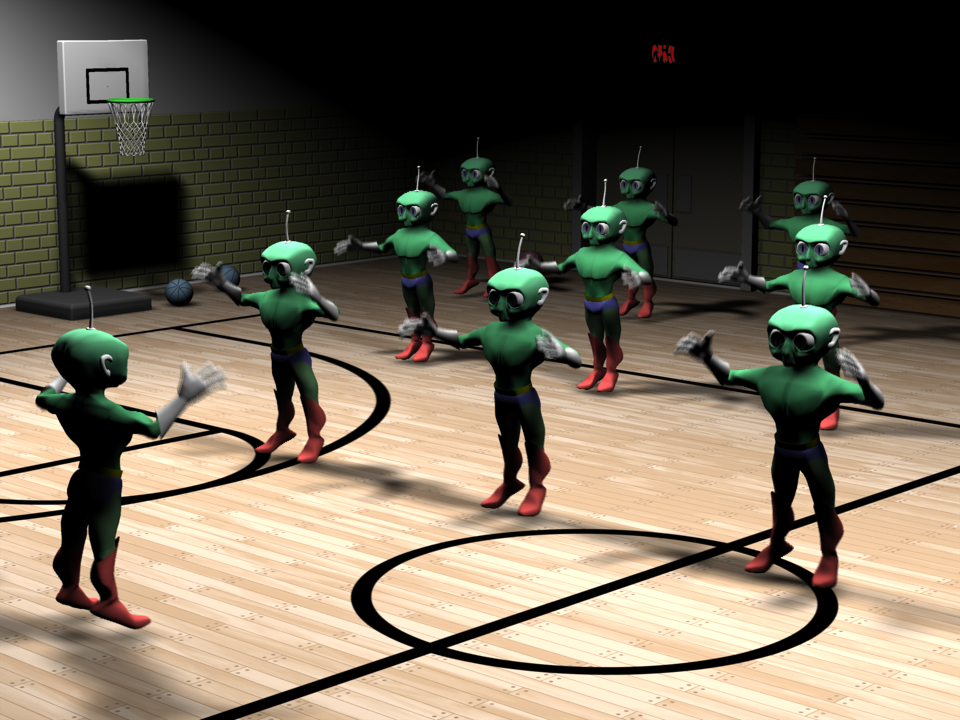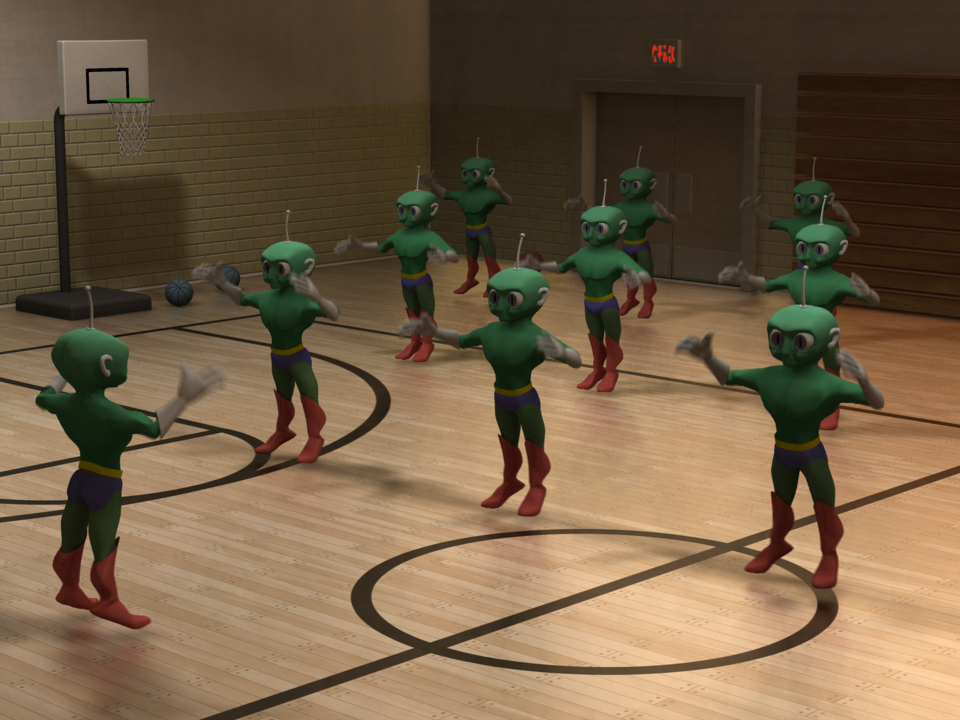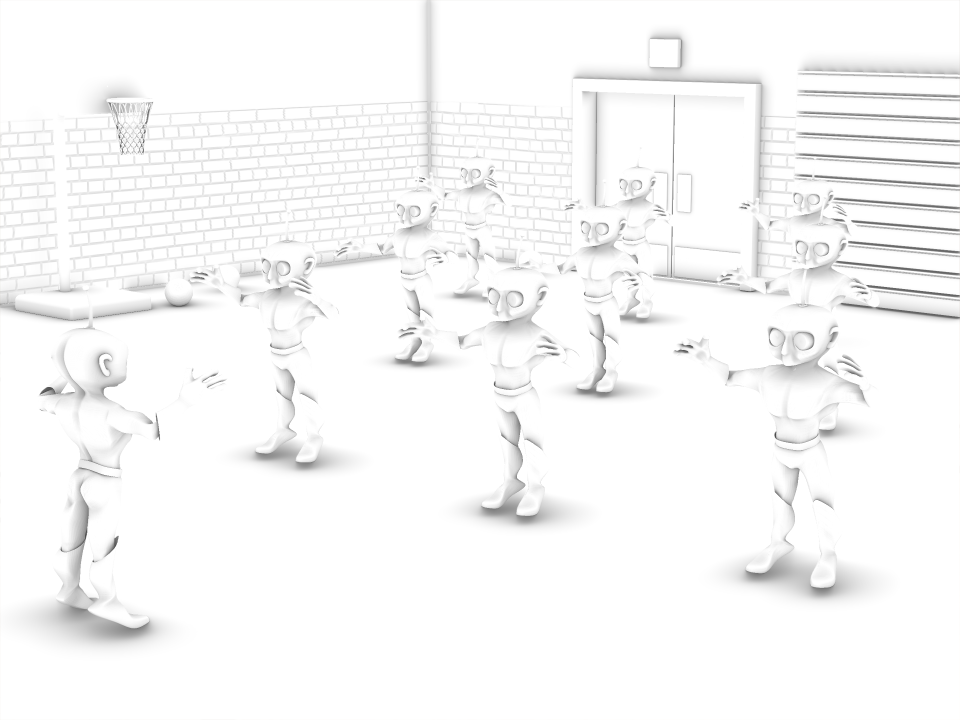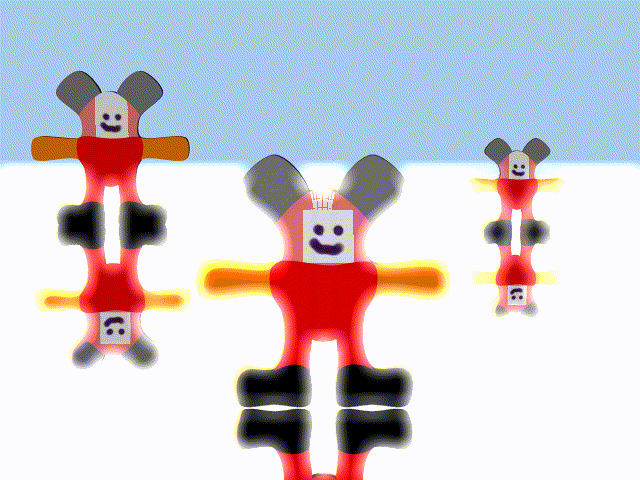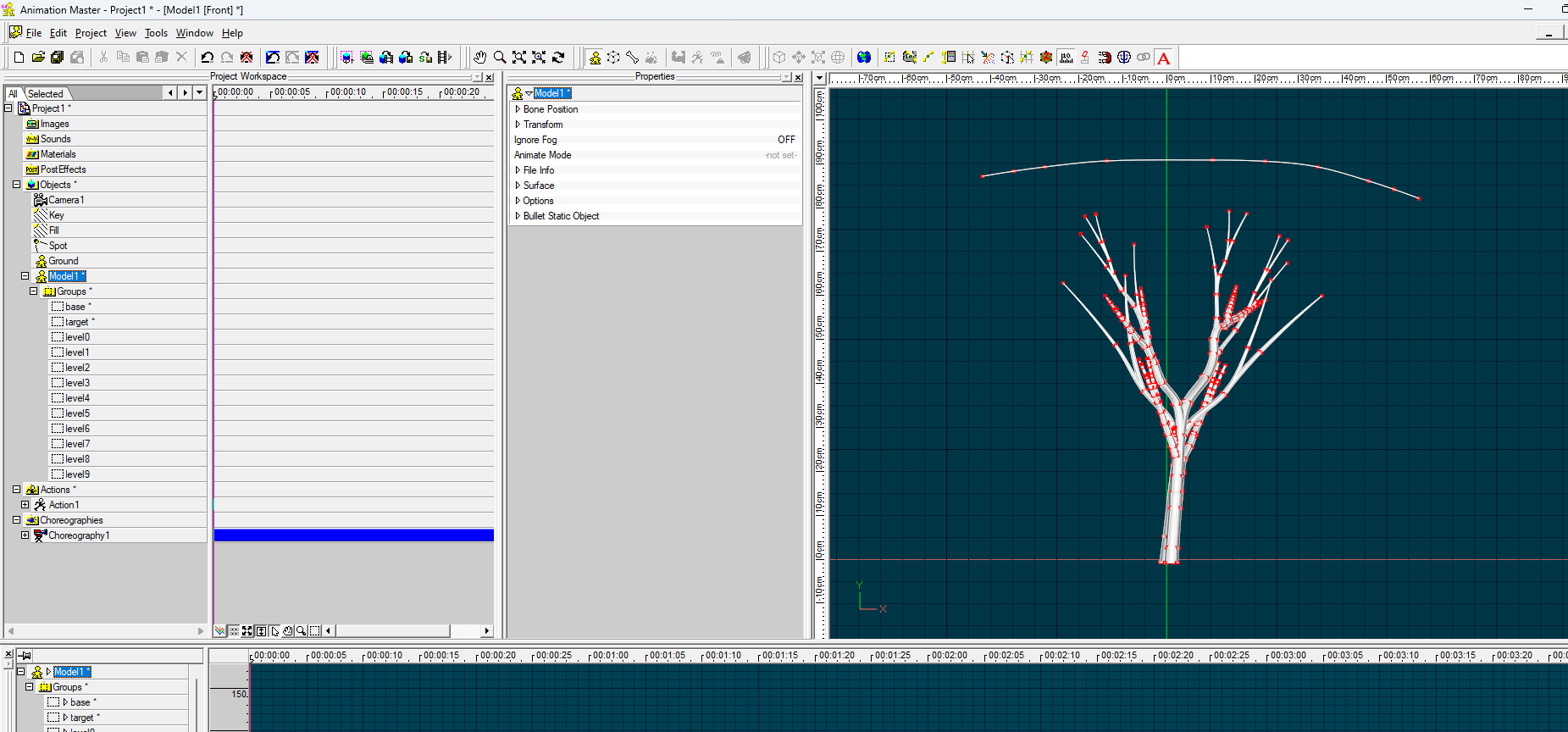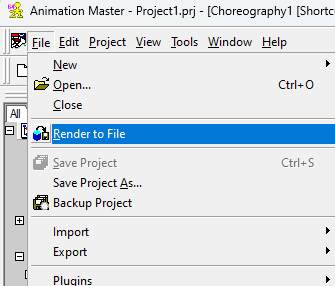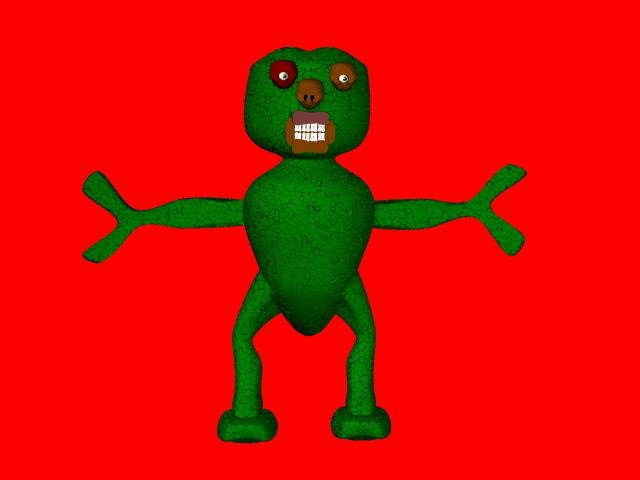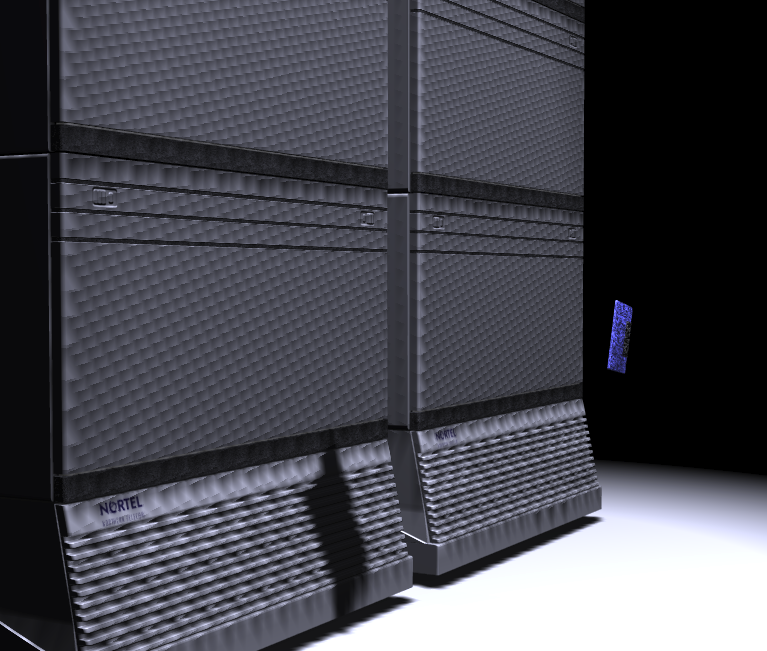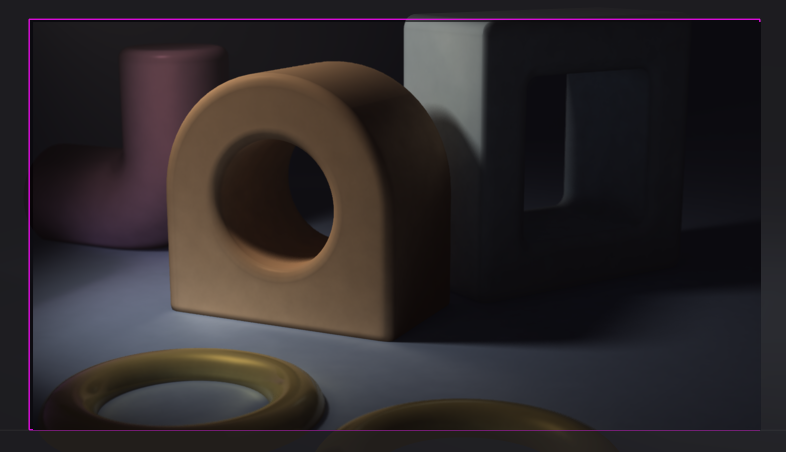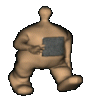Search the Community
Showing results for 'project'.
-
I watched the tech talk video. Also found an old Matt Campbell PDF tute in my files. Could you possibly zip the above project for me to download for study? That's the hair I'm after. (Or show screen shots of the Material and emitter settings)
-
Here is what we might expect to see in the console window if our project file is set to render 24 frames: This is a batch file running with the following variables: "F:\runme.bat" "Pool1.rpl" "TheJob" "06/24/2024 12:56 AM" 25 " 0:01:26" "F:\am\renderfolder" program F:\runme.bat (batch file) pool Pool1.rpl job TheJob time 06/24/2024 12:56 AM frames 25 elapsedtime 0:01:26 outputfolder F:\am\renderfolder ffmpeg version N-112991-g081d69b78d-20231215 Copyright (c) 2000-2023 the FFmpeg developers built with gcc 13.2.0 (crosstool-NG 1.25.0.232_c175b21) configuration: --prefix=/ffbuild/prefix --pkg-config-flags=--static --pkg-config=pkg-config --cross-prefix=x86_64-w64-mingw32- --arch=x86_64 --target-os=mingw32 --enable-gpl --enable-version3 --disable-debug --enable-shared --disable-static --disable-w32threads --enable-pthreads --enable-iconv --enable-libxml2 --enable-zlib --enable-libfreetype --enable-libfribidi --enable-gmp --enable-lzma --enable-fontconfig --enable-libharfbuzz --enable-libvorbis --enable-opencl --disable-libpulse --enable-libvmaf --disable-libxcb --disable-xlib --enable-amf --enable-libaom --enable-libaribb24 --enable-avisynth --enable-chromaprint --enable-libdav1d --enable-libdavs2 --disable-libfdk-aac --enable-ffnvcodec --enable-cuda-llvm --enable-frei0r --enable-libgme --enable-libkvazaar --enable-libaribcaption --enable-libass --enable-libbluray --enable-libjxl --enable-libmp3lame --enable-libopus --enable-librist --enable-libssh --enable-libtheora --enable-libvpx --enable-libwebp --enable-lv2 --enable-libvpl --enable-openal --enable-libopencore-amrnb --enable-libopencore-amrwb --enable-libopenh264 --enable-libopenjpeg --enable-libopenmpt --enable-librav1e --enable-librubberband --enable-schannel --enable-sdl2 --enable-libsoxr --enable-libsrt --enable-libsvtav1 --enable-libtwolame --enable-libuavs3d --disable-libdrm --enable-vaapi --enable-libvidstab --enable-vulkan --enable-libshaderc --enable-libplacebo --enable-libx264 --enable-libx265 --enable-libxavs2 --enable-libxvid --enable-libzimg --enable-libzvbi --extra-cflags=-DLIBTWOLAME_STATIC --extra-cxxflags= --extra-ldflags=-pthread --extra-ldexeflags= --extra-libs=-lgomp --extra-version=20231215 libavutil 58. 33.100 / 58. 33.100 libavcodec 60. 35.100 / 60. 35.100 libavformat 60. 18.100 / 60. 18.100 libavdevice 60. 4.100 / 60. 4.100 libavfilter 9. 14.100 / 9. 14.100 libswscale 7. 6.100 / 7. 6.100 libswresample 4. 13.100 / 4. 13.100 libpostproc 57. 4.100 / 57. 4.100 Input #0, image2, from 'F:\am\renderfolder\image.%04d.png': Duration: 00:00:00.83, start: 0.000000, bitrate: N/A Stream #0:0: Video: png, rgb48be(pc, gbr/unknown/unknown), 200x200, 30 fps, 30 tbr, 30 tbn File 'F:\am\renderfolder\output.mp4' already exists. Overwrite? [y/N] y Stream mapping: Stream #0:0 -> #0:0 (png (native) -> h264 (libx264)) Press [q] to stop, [?] for help [libx264 @ 0000023141102c80] using cpu capabilities: MMX2 SSE2Fast SSSE3 SSE4.2 AVX FMA3 BMI2 AVX2 [libx264 @ 0000023141102c80] profile High, level 1.2, 4:2:0, 8-bit [libx264 @ 0000023141102c80] 264 - core 164 - H.264/MPEG-4 AVC codec - Copyleft 2003-2023 - http://www.videolan.org/x264.html - options: cabac=1 ref=3 deblock=1:0:0 analyse=0x3:0x113 me=hex subme=7 psy=1 psy_rd=1.00:0.00 mixed_ref=1 me_range=16 chroma_me=1 trellis=1 8x8dct=1 cqm=0 deadzone=21,11 fast_pskip=1 chroma_qp_offset=-2 threads=6 lookahead_threads=1 sliced_threads=0 nr=0 decimate=1 interlaced=0 bluray_compat=0 constrained_intra=0 bframes=3 b_pyramid=2 b_adapt=1 b_bias=0 direct=1 weightb=1 open_gop=0 weightp=2 keyint=250 keyint_min=25 scenecut=40 intra_refresh=0 rc_lookahead=40 rc=crf mbtree=1 crf=23.0 qcomp=0.60 qpmin=0 qpmax=69 qpstep=4 ip_ratio=1.40 aq=1:1.00 Output #0, mp4, to 'F:\am\renderfolder\output.mp4': Metadata: encoder : Lavf60.18.100 Stream #0:0: Video: h264 (avc1 / 0x31637661), yuv420p(tv, progressive), 200x200, q=2-31, 30 fps, 15360 tbn Metadata: encoder : Lavc60.35.100 libx264 Side data: cpb: bitrate max/min/avg: 0/0/0 buffer size: 0 vbv_delay: N/A [out#0/mp4 @ 000002313eec1500] video:28kB audio:0kB subtitle:0kB other streams:0kB global headers:0kB muxing overhead: 3.984505% frame= 25 fps=0.0 q=-1.0 Lsize= 29kB time=00:00:00.76 bitrate= 313.7kbits/s speed=16.6x [libx264 @ 0000023141102c80] frame I:1 Avg QP:23.13 size: 2367 [libx264 @ 0000023141102c80] frame P:13 Avg QP:27.04 size: 1478 [libx264 @ 0000023141102c80] frame B:11 Avg QP:27.13 size: 606 [libx264 @ 0000023141102c80] consecutive B-frames: 28.0% 40.0% 0.0% 32.0% [libx264 @ 0000023141102c80] mb I I16..4: 34.3% 42.0% 23.7% [libx264 @ 0000023141102c80] mb P I16..4: 0.6% 7.0% 1.4% P16..4: 22.9% 26.1% 15.0% 0.0% 0.0% skip:26.9% [libx264 @ 0000023141102c80] mb B I16..4: 0.2% 1.8% 0.2% B16..8: 37.1% 17.4% 5.5% direct: 1.9% skip:35.8% L0:40.8% L1:43.2% BI:16.0% [libx264 @ 0000023141102c80] 8x8 transform intra:63.2% inter:61.5% [libx264 @ 0000023141102c80] coded y,uvDC,uvAC intra: 62.8% 63.9% 34.4% inter: 24.8% 18.5% 3.2% [libx264 @ 0000023141102c80] i16 v,h,dc,p: 72% 1% 18% 8% [libx264 @ 0000023141102c80] i8 v,h,dc,ddl,ddr,vr,hd,vl,hu: 31% 9% 21% 10% 4% 7% 3% 6% 9% [libx264 @ 0000023141102c80] i4 v,h,dc,ddl,ddr,vr,hd,vl,hu: 24% 16% 23% 6% 7% 10% 5% 3% 7% [libx264 @ 0000023141102c80] i8c dc,h,v,p: 59% 13% 20% 7% [libx264 @ 0000023141102c80] Weighted P-Frames: Y:0.0% UV:0.0% [libx264 @ 0000023141102c80] ref P L0: 80.0% 15.9% 2.9% 1.1% [libx264 @ 0000023141102c80] ref B L0: 95.0% 5.0% [libx264 @ 0000023141102c80] ref B L1: 99.5% 0.5% [libx264 @ 0000023141102c80] kb/s:271.08 MP4 file created successfully. Creating zip archive of PNG images a image.0000.png a image.0001.png a image.0002.png a image.0003.png a image.0004.png a image.0005.png a image.0006.png a image.0007.png a image.0008.png a image.0009.png a image.0010.png a image.0011.png a image.0012.png a image.0013.png a image.0014.png a image.0015.png a image.0016.png a image.0017.png a image.0018.png a image.0019.png a image.0020.png a image.0021.png a image.0022.png a image.0023.png a image.0024.png Zip archive created successfully: F:\am\renderfolder\imagesTheJob.zip Deleting original PNG files PNG images archived and original files deleted
-
That is some great history information. Thank you. I’m surprised by the fact that the variety of the .prj scene files wasn’t as big as I expected, but still some of these look interesting. Could you please show me some Shaded/Wireframe screenshots and final renders of “Jumper”, “Moonscape” and “roof top mayhem”? I guess this is what I was mainly thinking about. Well, I know the fact that the majority of the character models from that timeframe were characters from the “Why does the wind blow?” short film, but I guess that the rest of the content in that category was varying during that time (a lot of the models and especially the “realistic”, “anime” and “vehicles” categories), right? That’s strange. I even thought the scene with the two dragons (which was seen on the cover of the second edition of the Animation Master handbook by Jeff Paries) would also be included. This probably means that at the time they were released as separate models without a .prj file? I know I saw the tree model from that scene being used as a bush for an animated project from 1998 before (which might have been created using version 6). Also, what was the list of the motion capture files that were included? And in case you don't feel I'm asking for too much, what did the models which were coming from the tutorials folder look like, as well as the more refined of the “realistic”, “anime” and “vehicles” models (that weren’t included in the Extras CD) in AM2000? I would like to see screen captures of some in Shaded/Wireframe mode.
-
2001 Slit-Scan Effects Simulated in A:M? With MUFOOF?
fraizer replied to fraizer's topic in Work In Progress / Sweatbox
Thank you, Robert. Thank you, Fuchur. Banding -- a soft slit, that's an excellent idea. I will play with that. Not sure what a render "preset" is, other than the settings contained in the Cho file I posted. (I don't use Projects in my projects, that's why I posted individual files...). Re: EXR and exposure: A few years ago, I was working on a project with Rob Blalack and we discussed using EXR for something we were trying to do, but that's as far as it went; and that is the limit of my understanding of EXR -- very limited. I have found that a broad range of Keylight intensities works, with varying degrees of success; same is true for Pass and Blur values; to a large degree it is a matter of taste. I am very, very curious to know if there is another way to do the slit-scan technique in A:M without using MUFOOF... -
Hello Hashers- In the beginning of the sequence the volumetric beam reaches all the way to the ground plane but as the project continues (frames 30-60) the beam breaks up and doesn't reach the ground. Can anyone figure the problem? VolumetricTest.prj
-
I have often wondered if particle emission rates are per patch or per group. Your test project is a good chance to examine this. First, however, I'll note that the two squares in the Chor are not quite equal. DenseMesh is about 100 cm across while SimpleMesh is about 150cm across then scaled down to 62%. Scaling an object will scale the particles it emits so that may explain why Simple has sharper corners than Dense... If I edit the squares so that both are 100 cm across and both 100% scaled in the chor, they are starting to look much more similar... The emission rate in the Sprite Emitter is set to "1000"... It's possible that is so high that an overload of sprites is masking any difference between the two results. I'm going to scale that value down by adjusting the Emission rate in the Sprite System. This value is always a percentage, not a count. Why are there two controls for... the same thing? It is possible to have more than one "Sprite Emitter" as children of the "Sprite System". For example a fire material might have a flame sprite, a smoke sprite and a spark sprite, each with its peculiar settings for many of the parameters we see in "Sprite Emitter". Having these percentage settings in the "Sprite System" lets us uniformly scale the whole effect without needing to edit each emitter. With the emission rates scaled down to 1% we can observe the sprites being born... Frame 0: Frame 5 Frame 10: Frame 15: Frame 20: Frame 25: Even though DenseMesh has 25 times more patches than SimpleMesh, both seem to be putting out an equal number of particles. This is the opposite of what I expected. I thought the number of particles would increase with the number of patches. I thought the lumpy result your original PRJ had for SimpleMesh was because it had fewer sprites to blend together, but it was really because they were scaled smaller and perhaps had less overlap among the sprites. Thanks for inquiring, Tom!
-
Running a test with the Sprites material and the question is, does the patch count effect the "look" of the material emissions? Here is a picture of two meshes (project attached) and the denser mesh seems to have a smoother looking cloud... It would seem that the more patches, the "busier" the picture would be but this is not the case.. Can anyone explain this phenomenon? (BTW- the picture is from 30 rendered.) CloudSpriteNewTests.prj CloudletDisc.tga CloudletDiscDarker2.tga
-
Yes, that was a cool particle project. I will have to play with the zipped sprite cloud file I just downloaded. Thank you
-
Strange that I'm seeing the gif animation in the preview of this post but not in the post itself. As far as the project itself... When we download the project file it will of course be missing any referenced images. As such when I render it I get the melting ice and fire but not the character. Still a fun project even without the frozen guy thawing out in the render. Let's see if this appears in this post... yep. It does.
-
Here is another modern render of one of my old Animation Showdown animations. I added a school gymnasium set and rendered with radiosity. A birdseye view of the chor looks like this. The set is a completely enclosed box with two kleig lights in the ceiling... A conventional render with those two lights gets this... That is very severe. If I were going to use conventional lighting I would need add a number of fill lights in strategic places. Here is a radiosity render. The shadow areas are no longer pitch black and there is visible detail even where the lights do not directly shine. Overall, however, it is too dark for my taste. Increasing the Intensity of the lights so that the charcters were well illuminated caused the brightest spots on the floor to become overbright and clip. Instead I applied a gamma correction to the radiosity render. I''m liking this much better... Unfortunately, the shadowing that was indistinct in the raw render is now ever weaker. To give that some more bite i rendered a pass with ScreenSpace Ambient Occlusion (SSAO)... ... and composited that by "multiplying" it with the Radiosity. I did that in After Effects but an A:M "composite Project" can do the same operation. This PNG alternates "before" and "after"... SSAO has no anti-aliasing so I had to render those at 3x3 times the normal resolution to make smooth versions suitable for compositing. When A:M introduced Radiosity our computers weren't ready for it. Each render took so long that animation was unthinkable. But now with a modern CPU and NetRender it is within reach. My 640x480 test renders for this scene took only about 3 minutes per frame. After i got my settings decided and cranked up the quality, the full-frame final renders took only about 20 minutes each. Get started with Radiosity with Yves Poissant's Cornell Box Tutorial Learn more at Yves Poissant's Radiosity/Photon Mapping Pages
-
Can you upload a sample project where this happens, Robert?
-
project file oolldd1.prj
-
-
-

Links to Earliest Web Pages with Hash AM Training material
Rodney replied to Samaritan2's topic in Open Forum
The project I've uploaded should open in v15 and v19. Probablly not v10 but it's easy enough to try. When in doubt use v19 unless there is some specific reason to go back versions... such as to use plugins are features no longer included in later release. Plugins usually need to be recompiled after time passes due to various changes both internally and externally to Animation:Master. I believe the attached in this post is the original project and that should open fine in v10... all the way through v19. A:M will prompt when saving to update so you'll have to make a decision at that time. For those that are curious you can also see various things that I modified. Stanley.zip -
Hi Rusty, Always good to see you! There is the Treez plugin that is lauched from an Action. Perhaps you are thinking of that Plugin? It's not easily discoverable... had to remind myself how to use it but my memory came through for me. The key steps: Spline/Lathe a base shape - For example, Lathe a 2 control point spline into cylinder with 5 cross sections and then lop off/remove the top half leaving a circle. Select and name this group "base". Create a spline, plane, grid or set of splines and grids and place these above the circle/base as a target for the canopy to be created. If designed well you might be able to use these patches for leaves later. I call this group of splines and patches "target" although when generating using the Treez plugin It may be whatever is selected that becomes the target. Now the crucial launching step... Create an Action that uses this model, Right Click > Plugins > Treez This should launch and run to project the base toward the target. Edit: Just now see Robert's response and that will likely have more detail. Note that the target's control points are what determines where the branches will be generated and target.
-

How do I make a image file using Hash? is it even possible to make it?
Rodney replied to Pizza Time's topic in New Users
Regarding rendering images to file, Steffen was kind enough to add a Render option to the File menu. This is something even old time users of Animation:Master never had. That (in theory) makes rendering images more easily discoverable than using the classic Render icon. If we haven't saved our project, by default A:M will prompt us to save the project first and then take us to the Render options panel. Aside: In working with 2D folks I've noted that many simply don't have the term 'render' in their production vocabulary. For me. prior to engaging with 3D. I guess it meant 'to tear apart' but more closely means 'to separate or refine into detailed parts' as in 'the man drew a finely rendered drawing of the barn'. After introduction to 3D it just became the way we create images from our projects. -
beentinkering around to make a monster as a project ..what if anything do you like or would make it better this is just a fun project
-
At the December 9 2023 Live Answer Time we talked about the Light "Bias" setting and I now recall the project where that had been a big problem... it was this "Parallel Reload" project! Here is a frame from a render with the bias setting not correctly set. The proper result is at the top of this thread. @Pizza Time
-
As a challenge to myself, I will start something to tie into my current project. I sat down last night late and decided to build a male and female head. Robert and I have been talking about aw transfer. Going to model something that use and low res mesh and transfer weighting to a denser mesh. I will post results shortly
-
I had something like that happen when i turned the constraints Pose on. 😮 I'm not sure how you got the long pants. Instead of turning the Constraints Pose on in the Chor, turn it on in the original model instance in the objects folder before you put the model in the chor. If you want to save your work you'll need to do Project>Embed All before you save a PRJ
-
Cool. I’ll try that. I also created a text file with the needed coordinates and saved that. I never save a project anymore. more than once or twice the project file would not open. Good thing I didn’t embed the component files. But that’s another topic!
-
John Purcell introduces functions, a form of reusable code. When you invoke a function, that causes the program to depart to another portion of your code, execute it, then return to just after the original function call. This first lesson on functions does not yet consider the important function return values or function parameters, but those are coming. Sample lesson idea: Copy the code of your Case and Switch program into a new C++ project and modify it to print the opening title and explanation via a function that is called, rather than having those hard coded into the main() loop of your program If your Case and Switch program didn't have an opening title and explanation... invent one for your function to print!
-
Hi Tim, Attached is a project file with the same lighting, just replaced the models with some objects from the library, most of the settings you will be looking for will be in the Choreography/Radiosity and Global Ambiance Type. Cheers 🍻 WickerBench_Lighting.prj
-
Yes, I entered the official contest! Before I entered the site and saw the examples. (happily) It took me more effort than I thought. Most time went up with the synchronity from seconds to Beats Per Minute. One thought during the project that stays me by was: it's not what I want to do with it, but how to keep up with it, Good promo for Animation:Master! ☺️





















